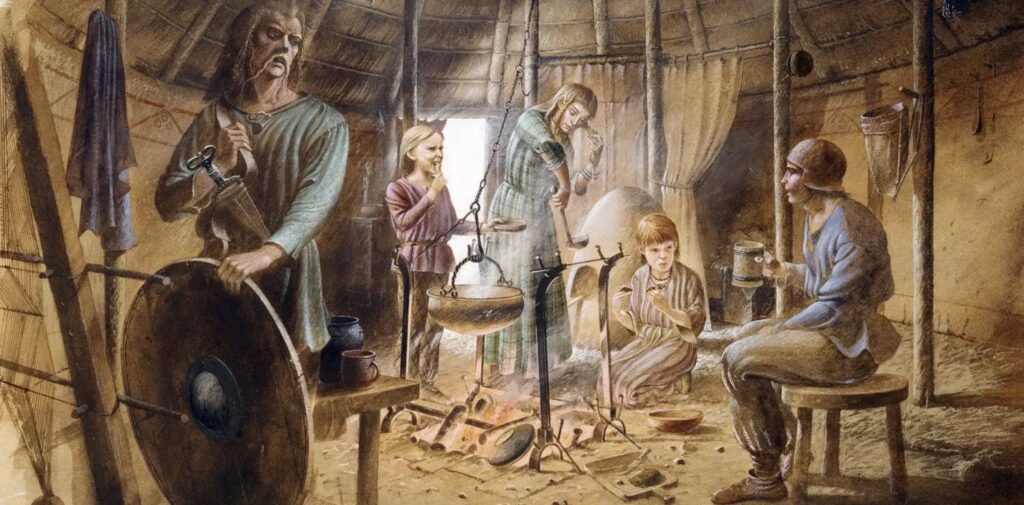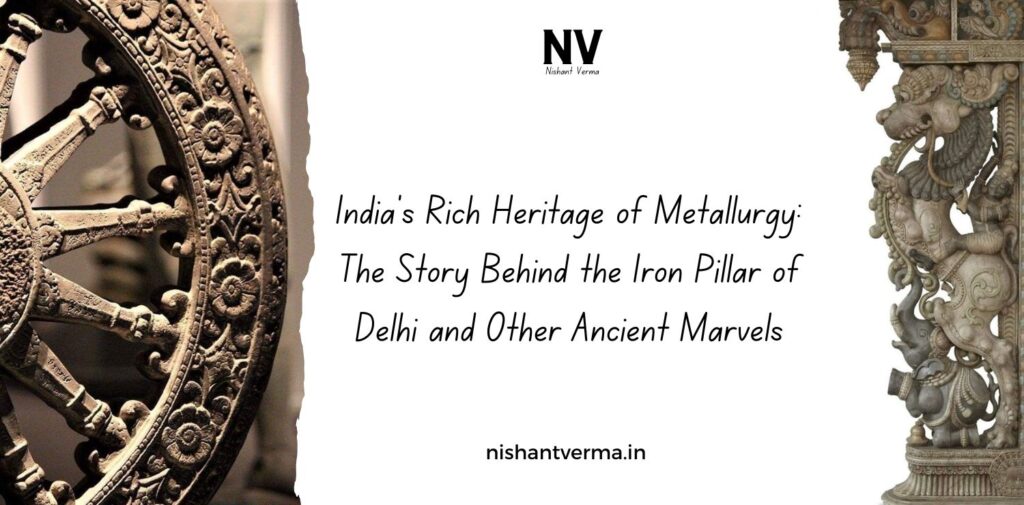India has a long and proud history of achievements in various fields, from art to science, and one of the most fascinating areas of ancient Indian knowledge is metallurgy—the science of working with metals. Among the many wonders of ancient India, the Iron Pillar of Delhi stands out as a symbol of the country’s advanced metalworking techniques. This marvel, along with other ancient examples of metallurgy, showcases India’s remarkable understanding of metals and their use in creating objects that have withstood the test of time.
In this article, we will explore the story of the Iron Pillar of Delhi and other ancient metallurgical wonders of India, looking at the significance of these objects, the science behind their creation, and how they reflect the ingenuity and expertise of ancient Indian craftsmen.
Iron Pillar of Delhi: A Marvel of Ancient Metallurgy
The Iron Pillar of Delhi is a 7-meter tall pillar made of wrought iron, located in the Qutb complex in Delhi, India. It is believed to have been erected during the reign of Chandragupta II (375–415 CE), though some scholars suggest it could have been made even earlier, around the 4th century CE. What makes the pillar remarkable is not just its size or age but the fact that it has withstood centuries of weathering without significant rust or corrosion.
This rust resistance is one of the most impressive aspects of the Iron Pillar. Today, we know that the pillar is made of a high-quality iron alloy that was skillfully crafted. It is estimated that the pillar contains about 98% iron, with a small percentage of carbon and other elements. This mixture created a strong and durable metal that has withstood the elements for over 1,600 years.

One of the key reasons for the Iron Pillar’s resistance to corrosion is the presence of a thin layer of passive oxide (rust) that forms on its surface. This oxide layer protects the inner metal from further corrosion. It’s believed that ancient Indian metallurgists, using advanced techniques, created this protective coating through a special process during the iron smelting and forging stages.
The Iron Pillar is not just an impressive piece of engineering; it also carries inscriptions that provide insight into ancient Indian culture, history, and language. The inscriptions on the pillar are written in Sanskrit and praise the achievements of King Chandragupta II. This makes the pillar not only a metallurgical marvel but also an important historical artefact.
Role of Iron in Ancient India
Iron was known and used in India for centuries, and by the time of the Iron Pillar, Indian metallurgists had developed advanced techniques for extracting and working with iron. The use of iron in India dates back to the Iron Age, which began around 1200 BCE. During this period, iron tools and weapons began replacing the earlier copper and bronze ones. Indian blacksmiths were known for their skill in forging iron into various forms, including weapons, tools, and artistic objects.
The development of iron metallurgy in India was not limited to the creation of simple tools. Ancient Indian metallurgists achieved remarkable feats in the production of complex and durable iron objects, including large sculptures and intricate architectural elements like the Iron Pillar.

Other Ancient Metallurgical Marvels of India
India’s achievements in metallurgy were not confined to the Iron Pillar alone. There are several other examples of ancient Indian metallurgy that demonstrate the skill and ingenuity of Indian craftsmen.
- The Iron Pillars of Udayagiri Caves: Before the Iron Pillar in Delhi, another famous iron pillar stood in the Udayagiri Caves in Madhya Pradesh, India. These pillars, dating back to the 4th century CE, are also made of iron and were used as supports for the Buddhist cave temples. The craftsmanship displayed in the Udayagiri iron pillars shows the advanced knowledge of metallurgy that existed during that time.
- The Nandana Pillar: Another example of advanced ironworking in ancient India is the Nandana Pillar in Bihar. This pillar, erected around 500 CE, is similar to the Iron Pillar of Delhi in that it is made from a high-quality iron alloy and has withstood the test of time. The Nandana Pillar is a testament to the skill of Indian metallurgists during the Gupta period, known for its intricate craftsmanship.
- The Delhi Iron Mosque (Quwwat-ul-Islam Mosque): The Quwwat-ul-Islam Mosque in Delhi, constructed in the 12th century CE, is home to an extraordinary collection of ironwork. Among its most remarkable features is a large iron gate that has survived for centuries without significant corrosion. This gate, and other iron elements within the mosque, show the skill of Indian metalworkers in creating durable iron objects that could resist the effects of time and weather.
- Damascus Steel: While not strictly from India, the story of Damascus Steel is closely tied to Indian metallurgical knowledge. Damascus steel was a type of steel used to make swords in the medieval Middle East, known for its strength, sharpness, and distinctive patterns. The technique of producing Damascus steel was influenced by the advanced knowledge of metalworking that Indian craftsmen had developed over centuries. The production of this steel involved high-quality iron that was combined with carbon, resulting in a material that was both flexible and strong.
- Copper and Bronze Artifacts: India’s expertise in metallurgy wasn’t limited to iron. The country has also produced a rich collection of copper and bronze artefacts, including sculptures, coins, and tools. The famous bronze sculptures of the Chola dynasty, such as the Nataraja (dancing Shiva) statue, are celebrated for their intricate design and the high quality of the bronze used in their creation. These artworks showcase the ability of Indian metallurgists to create beautiful and durable metal objects that have stood the test of time.

The Science Behind Ancient Indian Metallurgy
The achievements of ancient Indian metallurgy are not just the result of craftsmanship but also the application of scientific principles. The ancient metallurgists of India understood the properties of different metals and alloys, and they were able to control the processes of extraction, smelting, and forging with great precision.
One of the key aspects of ancient Indian metallurgy was the ability to produce high-quality steel, which was achieved through a process called “Wootz steel” or ” crucible steel.” Wootz steel was made by melting iron in a crucible along with charcoal and other materials, which resulted in a high-carbon steel with unique properties. This steel was highly prized for its ability to hold a sharp edge, and it was used in the creation of weapons, such as swords and daggers.
The use of advanced techniques, such as the careful control of temperature in the furnaces and the use of specific alloys, allowed Indian metallurgists to create durable and corrosion-resistant metals like those seen in the Iron Pillar of Delhi and other ancient artefacts.
Conclusion: The Iron Pillar of Delhi
The Iron Pillar of Delhi and other ancient Indian metallurgical marvels are a testament to the advanced knowledge and skills of Indian craftsmen in the field of metallurgy. These objects not only showcase the artistry and craftsmanship of ancient India but also reflect a deep understanding of the scientific principles behind metalworking. The ability of these objects to withstand the ravages of time, weather, and corrosion is a tribute to the ingenuity of India’s ancient metallurgists.
As we continue to study and appreciate these ancient marvels, we are reminded of the rich heritage of metallurgy in India and the important role it played in shaping the history and culture of the country. The Iron Pillar of Delhi, with its incredible durability and historical significance, will always remain a symbol of India’s extraordinary achievements in metallurgy.




